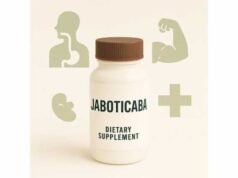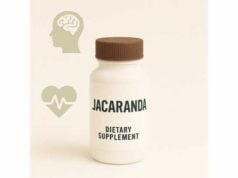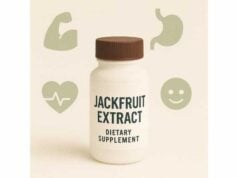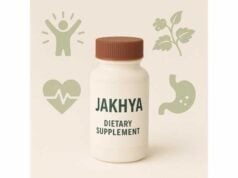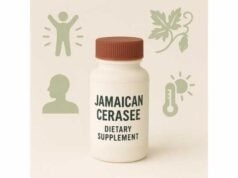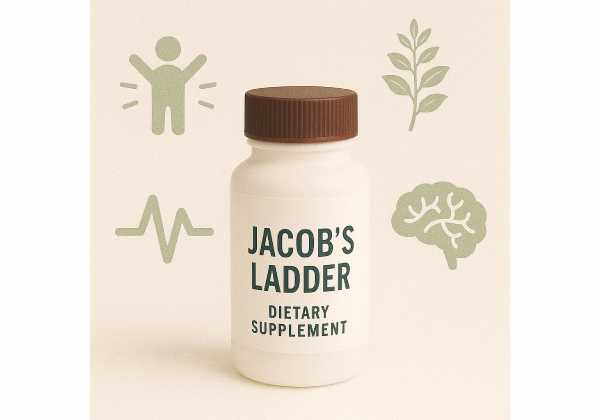
Jacob’s ladder (Polemonium caeruleum), sometimes called Greek valerian, is a hardy perennial with fern-like leaves and sky-blue bells. Beyond its ornamental charm, the plant has a documented history in European and Asian folk medicine, where roots and aerial parts were prepared as soothing teas, expectorant syrups, or topical washes. Modern phytochemical work identifies triterpenoid saponins and phenolic compounds as key constituents; these molecules help explain traditional uses for respiratory comfort, mild nervous tension, and skin support. That said, rigorous human trials are lacking. Most evidence comes from laboratory and botanical studies, so prudent, short-course use—favoring gentle water infusions and conservative topical applications—remains the sensible approach. This guide clarifies what Jacob’s ladder can and cannot do today, how to prepare it safely at home, where dosing guidance comes from, who should avoid it, and how to assess product quality if you choose a supplement form. You will also find a transparent summary of the evidence base to help set expectations and reduce risk.
Key Takeaways
- Root and aerial parts contain triterpenoid saponins and phenolics linked to soothing, expectorant, and skin-calming actions.
- Best suited to short-course use as a weak tea or diluted skin rinse; avoid concentrated extracts without expertise.
- Practical home range: 1–2 g dried root or leaf per 250 mL hot water, up to 1–2 cups/day for 3–7 days.
- Avoid during pregnancy or breastfeeding, in children, with known Moraceae/Polemoniaceae allergies, or if you have active gastrointestinal irritation.
Table of Contents
- What it is and how it works
- Plausible benefits today
- How to use: forms and prep
- Dosage: how much and how often
- Risks, side effects, and who should avoid
- Evidence: what we know and don’t
What it is and how it works
Jacob’s ladder (Polemonium caeruleum) is a perennial herb native to parts of Eurasia and cultivated widely as an ornamental. The common name refers to the tidy “ladder” formed by its paired leaflets. In ethnobotanical records, the plant appears as a mild demulcent-expectorant (to ease throat irritation and thin secretions), a gentle calming herb used at bedtime, and an external wash for irritated skin. Traditional preparations rely on water extractions—teas, decoctions, and syrups—rather than high-proof tinctures.
Constituents and why they matter
- Triterpenoid saponins (noted in roots and rhizomes): amphipathic molecules that foam in water and can loosen thick secretions. In vitro and analytical studies show Polemonium roots contain measurable totals of these saponins.
- Phenolics and flavonoids (from roots and aerial parts): antioxidant compounds that may support local inflammatory balance in lab models.
- Minor volatiles and organic acids: contribute aroma and taste; their physiologic relevance is likely modest compared with saponins.
Proposed mechanisms (from preclinical and historical use)
- Soothing the upper airway: saponins can increase secretion of a thinner mucus layer, improving clearance; warm fluids also hydrate mucosa, which helps on its own.
- Topical astringency and comfort: diluted teas may calm minor skin irritation; the effect is primarily supportive and should not replace standard wound or dermatitis care.
- Gentle relaxation: historical use as “Greek valerian” reflects a calming reputation, but this appears rooted in tradition rather than clinical trials. If any effect exists, it is likely mild.
What it is not
Jacob’s ladder is not a drug-strength expectorant, a proven anxiolytic, or a primary therapy for infections, asthma, or chronic inflammatory disease. Treat it as a traditional botanical for short, conservative use when you want a gentle nudge rather than a large effect.
Plausible benefits today
1) Throat and chest comfort during short colds
A warm tea made from the root or leaf can moisten the throat and provide a mild expectorant effect. The benefit comes from the combination of hydration, heat, and saponins. Expect subtle relief—less “stickiness,” easier swallowing, and slightly looser coughs—rather than dramatic decongestion. If symptoms escalate (high fever, chest pain, shortness of breath), seek medical care.
2) Bedtime wind-down ritual
Many traditional texts pair Jacob’s ladder with other calming herbs. While robust human evidence is absent, some people appreciate a pre-sleep routine: a weak infusion sipped warm, dim lights, screen-free time. Any benefit likely stems as much from the routine as from the plant itself.
3) Skin-soothing rinses
Diluted, cooled teas can be used as brief skin compresses on small, non-broken areas that feel irritated or tight. The astringent, slightly slippery quality reflects its polyphenol and saponin mix. As always, patch test first, and discontinue if redness or itch intensifies.
4) Convalescence “gentle tonic”
Historically, short courses after illness were common. The aim was appetite and throat comfort while resuming normal meals and hydration. For modern readers, this translates to 3–5 days of once-daily tea alongside soups, fruits, and adequate fluids.
Areas with signals but not claims
Lab and historical notes mention antimicrobial and antifungal activity of Polemonium saponins. These findings do not justify using the plant to treat infections. At most, they help explain why traditional teas and washes felt helpful while standard care or natural recovery did the heavy lifting.
How to use: forms and prep
Choose the gentlest effective form. For Jacob’s ladder, that generally means water-based preparations and short durations.
A) Simple infusion (leaf or finely cut root)
- Measure: 1–2 g dried material (about 1–2 tsp loosely packed) per 250 mL just-off-boil water.
- Steep: Cover 8–10 minutes (leaf) or 10–15 minutes (root).
- Strain and taste: The cup should be mild, slightly astringent, and faintly foamy if stirred.
- Use: Sip warm for throat comfort, or cool fully for a brief rinse or gargle.
- Course: Up to 1–2 cups/day for 3–7 days.
B) Light decoction (root pieces)
- Measure: 2 g dried root per 300 mL cold water.
- Simmer: Bring to a gentle simmer for 10 minutes, then cover off heat for 10 minutes.
- Use: Strain; sip slowly. If too strong (bitter, queasy), dilute 1:1 with hot water.
C) Syrup for cough comfort (kitchen method)
- Prepare a double-strength decoction (e.g., 4 g root in 300 mL water simmered as above).
- Reduce to ~150 mL, cool slightly, then mix 1:1 with honey or a vegan syrup.
- Dose: 1 teaspoon as needed, up to 3–4 times/day for ≤5 days. Store refrigerated for a week.
D) Topical compress
- Brew a standard infusion; cool to lukewarm.
- Clean the skin with mild soap and water.
- Soak sterile gauze, wring out, and apply 5–10 minutes to a small area once daily for up to 3 days.
- Stop if irritation worsens.
E) Capsules and tinctures—use cautiously
Commercial products vary widely and are rarely standardized to specific saponins. If you choose one, prefer labels that disclose plant part, extraction solvent, and independent testing. Start at the lowest label dose; avoid stacking with other strong bitters or expectorants.
Quality tips
- Buy from suppliers that state the botanical name (Polemonium caeruleum), plant part, country of origin, and lot testing for heavy metals and microbes.
- Store dried material airtight, away from light and heat; aim to use within 12 months.
Dosage: how much and how often
There is no official therapeutic dose for Jacob’s ladder. Practical ranges come from traditional preparations, product labels, and the chemistry of saponins, which can irritate the gut if overdone. Start low, taste as you go, and stop if you feel queasy or notice throat or skin irritation.
Infusion (leaf or root)
- Starting point: 1 g dried plant per 250 mL water.
- Usual home range: 1–2 g per cup, 1–2 cups/day, 3–7 days.
- Upper kitchen bound (without expert guidance): Avoid exceeding 2 g per cup or 2 cups/day.
Light decoction (root)
- 2 g in 300 mL water, simmered gently; drink up to 1 cup/day.
- Decoctions extract more saponins—use with care if you have a sensitive stomach.
Syrup
- 1 teaspoon as needed (see method above), max 3–4×/day, ≤5 days.
Capsules/tinctures
- Follow a conservative label: often 250–500 mg dried-herb equivalent per serving for capsules, or 1–2 mL tincture up to 2×/day. Because products are not standardized, treat these as trial doses, not targets. If you feel nausea or lightheadedness, reduce or discontinue.
When to reassess
- If you notice no meaningful relief after 3–4 days, or if symptoms worsen at any time, stop and consider medical evaluation.
- Do not use continuously for >7 days without guidance; this is a short-course herb.
Special populations
- Pregnancy/breastfeeding: avoid; safety data are insufficient.
- Children: avoid internal use; topical use only with clinician input, if at all.
- Older adults or those with GI sensitivity: stick to weak infusions and smaller sips.
Risks, side effects, and who should avoid
Common, dose-related effects
- GI discomfort: nausea, cramping, or loose stools—especially with strong decoctions or multiple cups.
- Taste aversion: saponins impart a planty, slightly bitter taste; over-strong preparations can provoke gagging.
- Skin dryness/itch with topicals: saponins and polyphenols can be astringent; moisturize after use and stop if irritation develops.
Allergy and cross-reactivity
- Anyone with confirmed allergy to Polemoniaceae or severe seasonal plant allergies should patch test topicals and be cautious with teas. Although uncommon, any signs of hives, wheeze, or throat tightness warrant urgent care.
Interactions and cautions
- Anticoagulants/antiplatelets: polyphenol-rich herbs can theoretically influence platelet function or drug metabolism; stay conservative and inform your clinician.
- Gastrointestinal disease: avoid internal use with active ulcers, GERD, or IBD flares; saponins may aggravate symptoms.
- Liver/kidney conditions: use only with professional guidance; comprehensive safety data are lacking.
- Before procedures: discontinue non-essential botanicals 1–2 weeks before surgery.
Absolute avoid
- Pregnancy and breastfeeding (insufficient safety data).
- Children (no established dosing).
- History of strong reactions to similar botanicals.
When to stop immediately
- Severe GI pain, persistent vomiting, rash/hives, breathing difficulty, yellowing of eyes/skin, or dark urine.
Safer everyday alternatives
- For throat comfort: warm saltwater gargles, honey-lemon tea (if not for children under 1 year), steam inhalation.
- For bedtime routine: good sleep hygiene and gentle, evidence-supported teas such as chamomile (if tolerated).
Evidence: what we know and don’t
What’s documented about the plant
- Polemonium caeruleum is widely acknowledged as a medicinal herb in botanical literature. Recent plant science work focuses on its genetic, cytogenetic, and agronomic characteristics—useful for cultivation and conservation.
- Root saponins have been quantified and characterized, lending support to traditional expectorant uses.
- Antifungal activity has been demonstrated in vitro for Polemonium saponin complexes against common yeasts. These findings are mechanistic, not prescriptions.
What’s missing
- Randomized human trials testing Jacob’s ladder for coughs, sleep, skin, or any specific diagnosis.
- Standardized extract studies that link a defined saponin/phenolic profile to clinical outcomes.
- Long-term safety and pharmacokinetic data.
How to read the gap
Because robust clinical trials are missing, your safest path is to treat Jacob’s ladder as a short-course, supportive botanical: weak teas, conservative dosing, and careful attention to your own tolerance. If you need reliable, predictable results—for example, persistent cough in chronic disease—consult your clinician for proven therapies and consider this plant only as an adjunct after discussion.
Practical bottom line
- Use gentle water preparations, not aggressive dosing.
- Expect subtle relief, not drug-level effects.
- If symptoms escalate or persist, seek care and retire the herb.
References
- Integration of Repeatome and Cytogenetic Data on Polemonium caeruleum L. (Polemoniaceae) 2025
- Agro-Morphological and Cytogenetic Characterization of Colchicine-Induced Tetraploid Plants of Polemonium caeruleum L. (Polemoniaceae) 2022
- The Case of the Medicinal Plant, Polemonium Caeruleum L 2020
- [On the inhibitory activity of Polemonium saponin against fungi (author’s transl)] 1981
- Quantitative determination of total triterpenoid saponins in Polemonium caeruleum rhizomes and roots 2008
Disclaimer
This article is educational and not a substitute for personalized medical advice, diagnosis, or treatment. Do not use Jacob’s ladder to self-treat infections, asthma, chronic cough, or skin disease. If you are pregnant, breastfeeding, under 18, have significant medical conditions, or take prescription medicines, consult a qualified healthcare professional before using any herbal product. Stop use and seek care if you experience allergic symptoms or unexpected side effects.
If this guide was helpful, please consider sharing it on Facebook, X (formerly Twitter), or another platform you prefer, and follow us for future evidence-guided articles. Your support helps our team continue producing high-quality, people-first health content.

